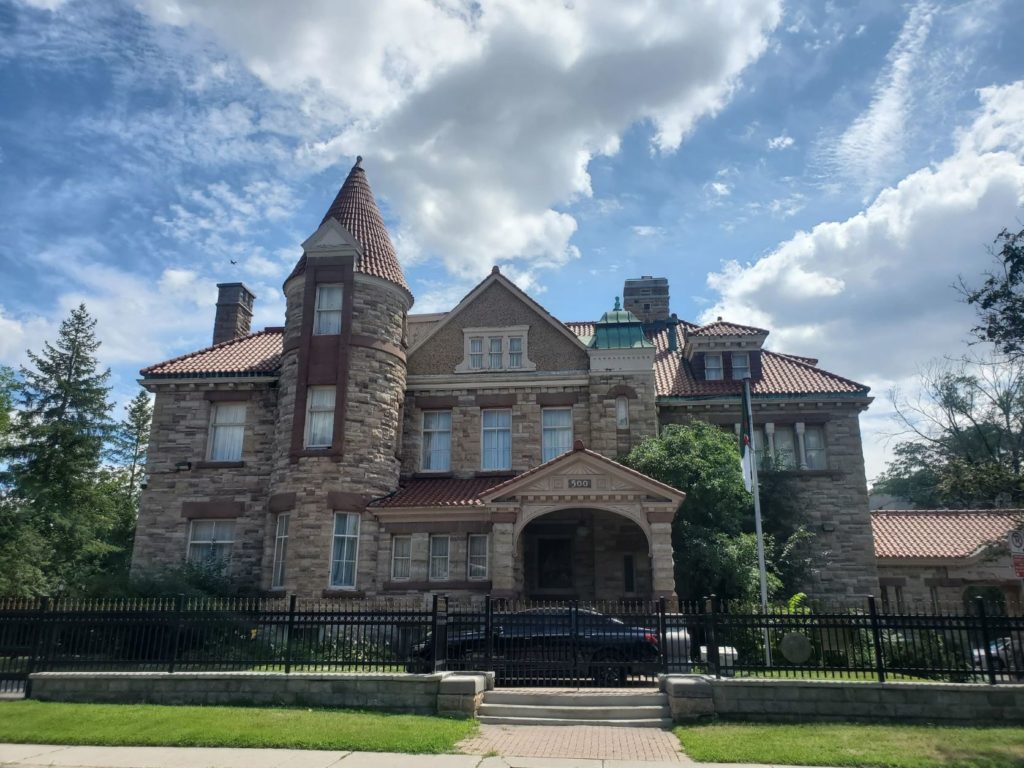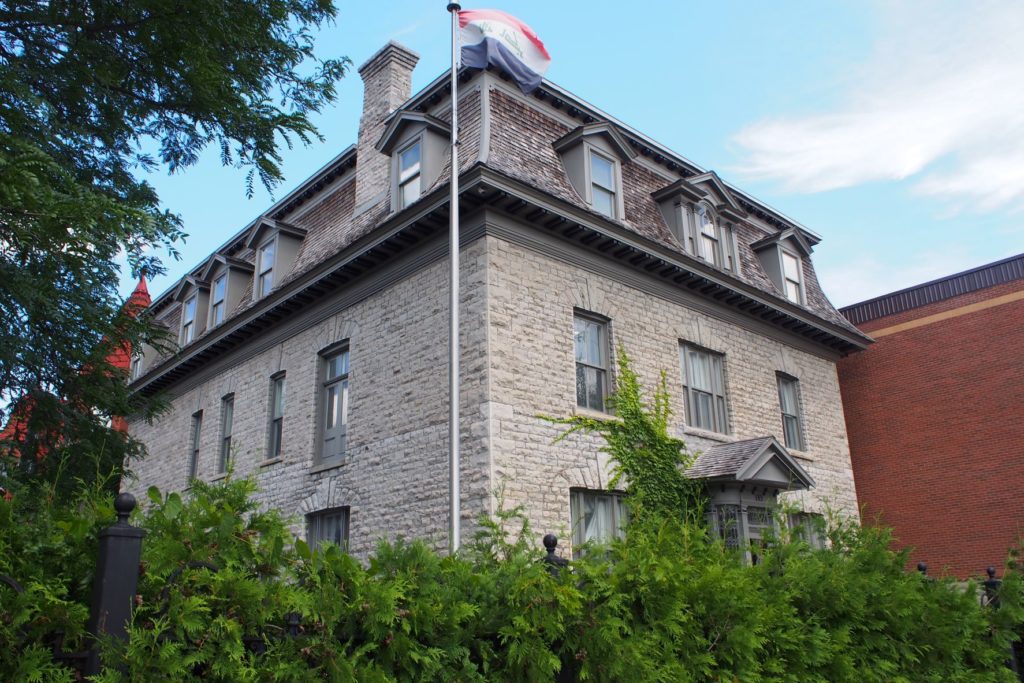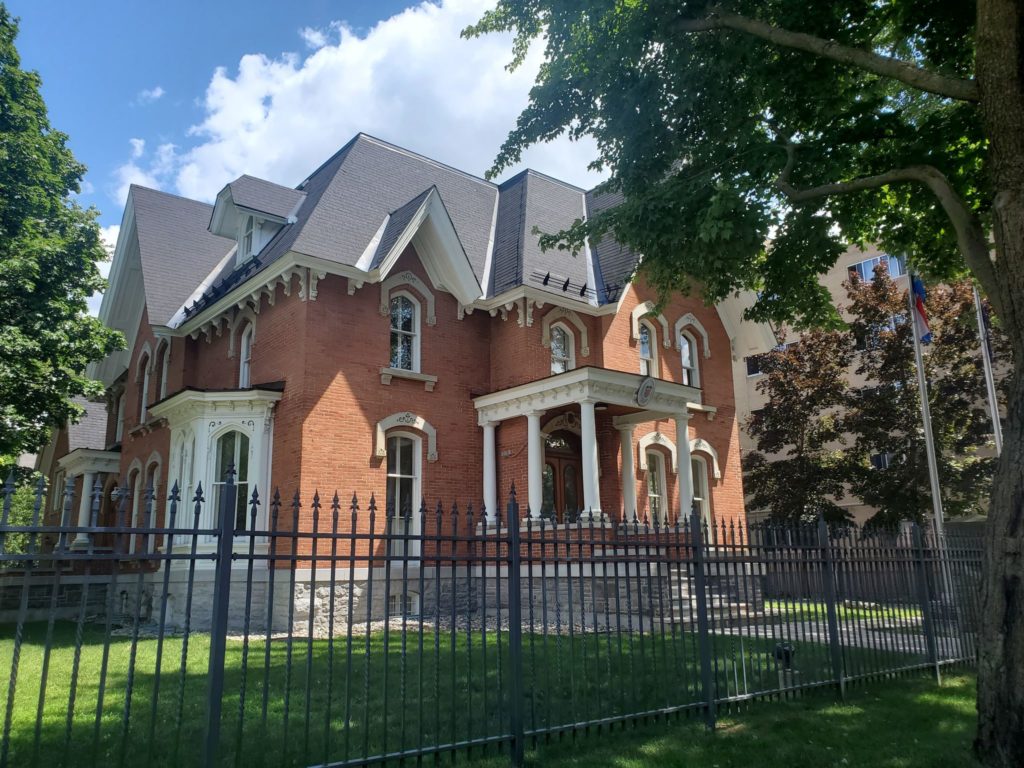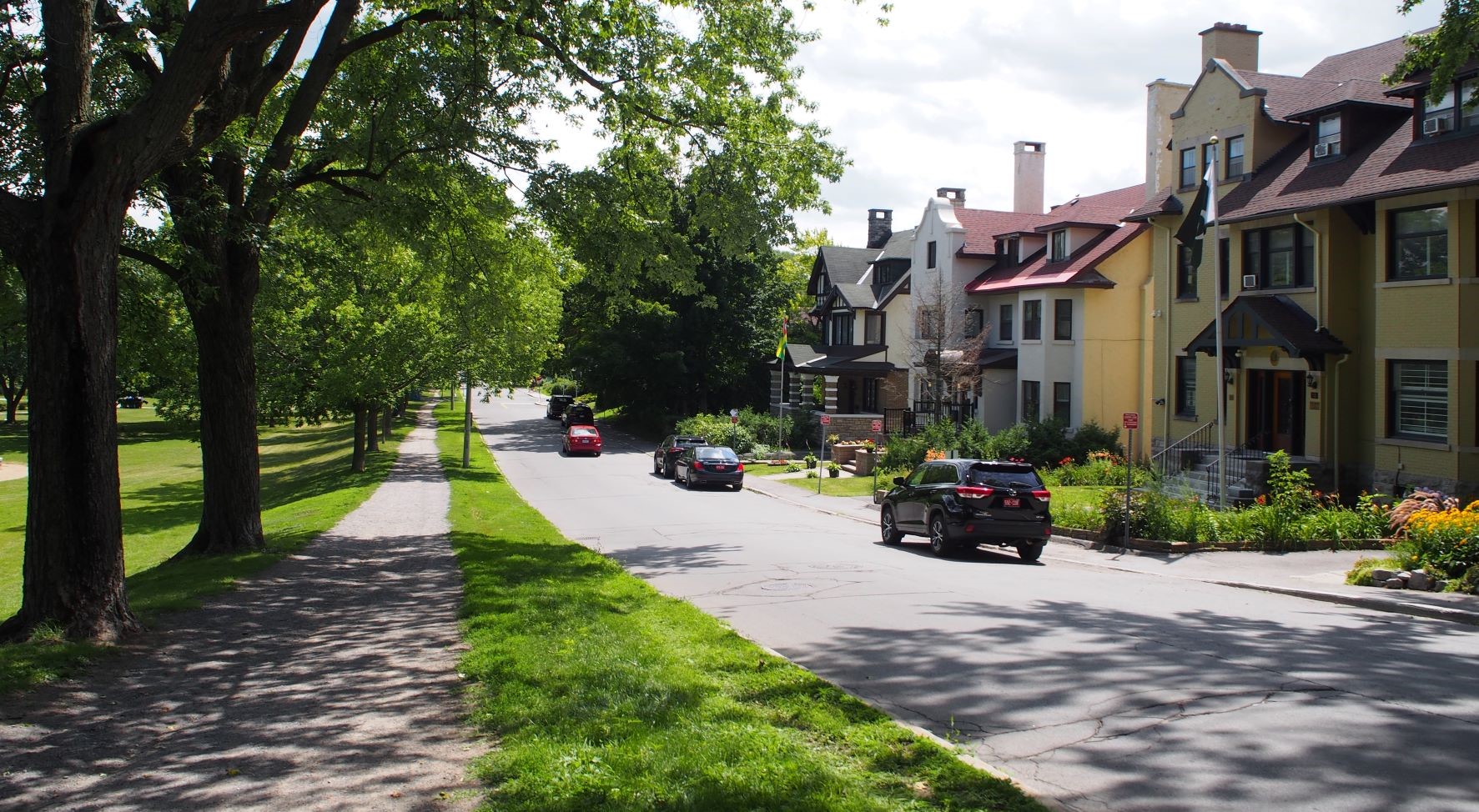To the east of Sandy Hill, you can find a series of imposing, Victorian Era mansions that serve as embassies for countries across the globe. These grand structures are reminiscent of a time when Sandy Hill was the wealthiest and most prestigious neighbourhood in Ottawa. Moreover, their adaptive reuse demonstrates excellent conservation practice that we should strive to follow today.

Fleck/Paterson House
Built by lumber baron J.R. Booth in 1903, the Fleck/Paterson House was occupied by families until 1983 when it was bought by developers and subsequently left abandoned and to deteriorate for a number of years. The house was saved when it was bought in 1991 by the Maharishi Heaven on Earth Development Corp. who undertook extensive renovations to do a full restoration of the building. Following its renewal it was bought by the Government of Algeria in 2002, at one of the highest prices ever paid for a house in Ottawa at the time.

Panet House
Built in 1877 for Charles-Eugène Panet, it was a family home until 1915, when it was sold and divided into apartment units. This change of use resulted in the loss of the mansard roof and the addition of new third-floor windows. The building came under the threat of demolition by the City of Ottawa twice, but was ultimately saved by community opposition and logistical challenges. In the late 1980s, Andrex undertook the project of restoring the house, even reinstating the original mansard roof and gable dormers. Shortly after, the house was purchased by the Republic of Angola. The house is now home to the Embassy of the Republic of Iraq.

Toller House
Constructed in 1875 in the Gothic Revival Style by Henry Horsey and J. Sheard architects, the first occupant of the Toller House was J.H. Plummer. It then went on to be occupied by many prestigious individuals, including Frederick Toller, from whom the house gets its name. From 1931 to 1968 the Toller House was used as a residence and a school by a group of nuns. It was then rented out to students from the University of Ottawa. In 1993 the building was purchased for the Republic of Croatia, and it underwent significant restoration work. In 1999, the Toller House opened its doors as the Embassy of Croatia following the award-winning project.
These are a few examples of the excellent Victorian-Era buildings-turned-embassies that populate the Sandy Hill landscape today. Thanks to ongoing community efforts, Sandy Hill features a rich and diverse architectural character with buildings from all periods of development that contribute to its distinct sense of place and atmosphere. Efforts that MTBA is proud to be part of through our work in the neighbourhood. Furthermore, Sandy Hill has become home to people from all walks of life and countries, from its senior citizens and affluent families to its students and new immigrants. Showing how existing communities can grow and adapt overtime to be more inclusive and resilient.
To learn more about community efforts to preserve heritage in Sandy Hill please visit Save Sandy Hill – ASH-ACS.

